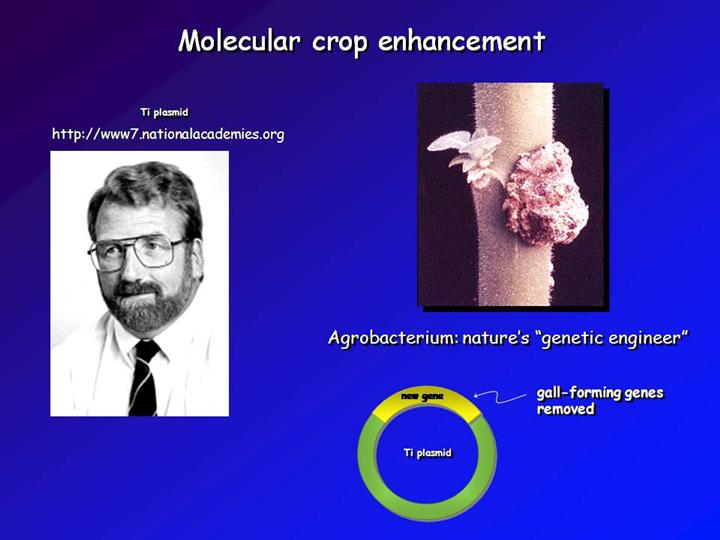| front |1 |2 |3 |4 |5 |6 |7 |8 |9 |10 |11 |12 |13 |14 |15 |16 |17 |18 |19 |20 |21 |22 |23 |24 |25 |26 |27 |review |
 |
To understand contemporary molecular approaches to modifying crop plants, you need to meet one more actor, nature’s own genetic engineer, a soil bacterium called Agrobacterium tumefasciens. This bacterium causes the formation of galls, which are tumors, on stems and roots of many plants (upper right). The understanding of how the bacterium forms the galls and the pioneering work that made it possible to use Agrobacterium to carry new genes into plants was done by pioneer Dr. Jeff Schell (left) and many colleagues. Agrobacterium tumefasciens carries a plasmid of its own that causes the formation of the tumors, as explained on the next slide. As its tumor-causing life style was understood through experimentation, it became possible to remove the tumor-causing genes and put the bacterium’s ability to carry genes into plant cells to work introducing genes to improve and protect plants from diseases and insects. http://www7.nationalacademies.org
|